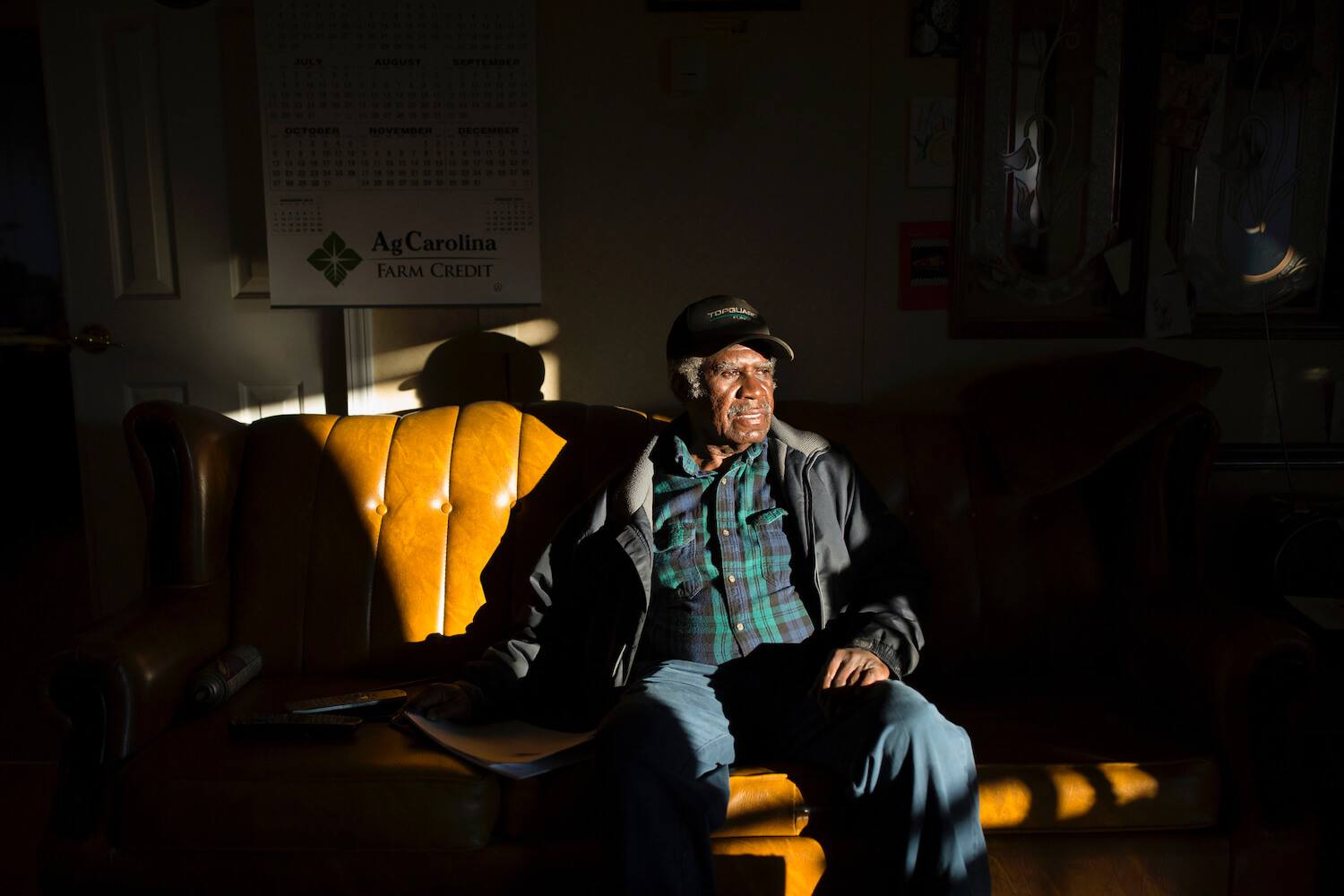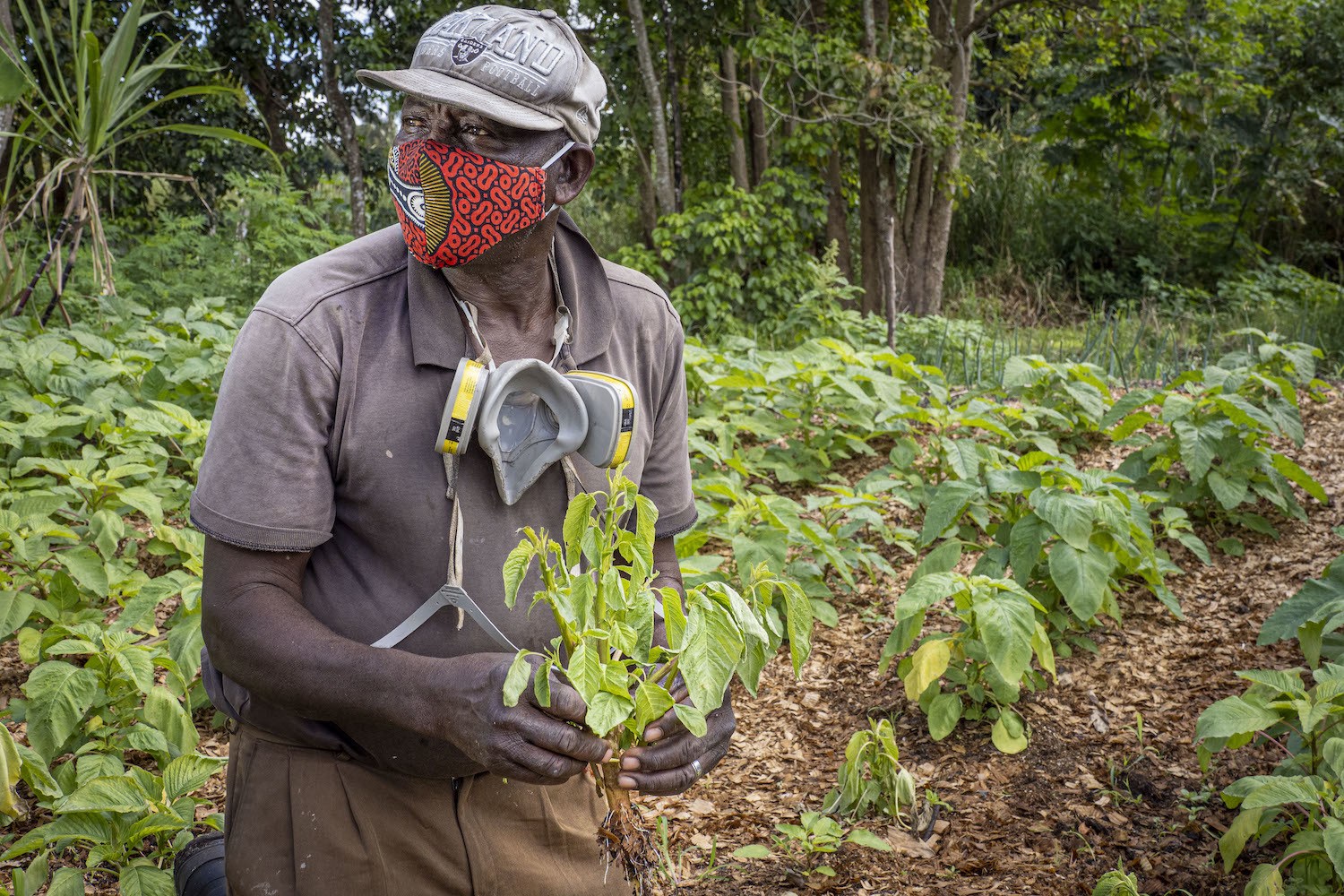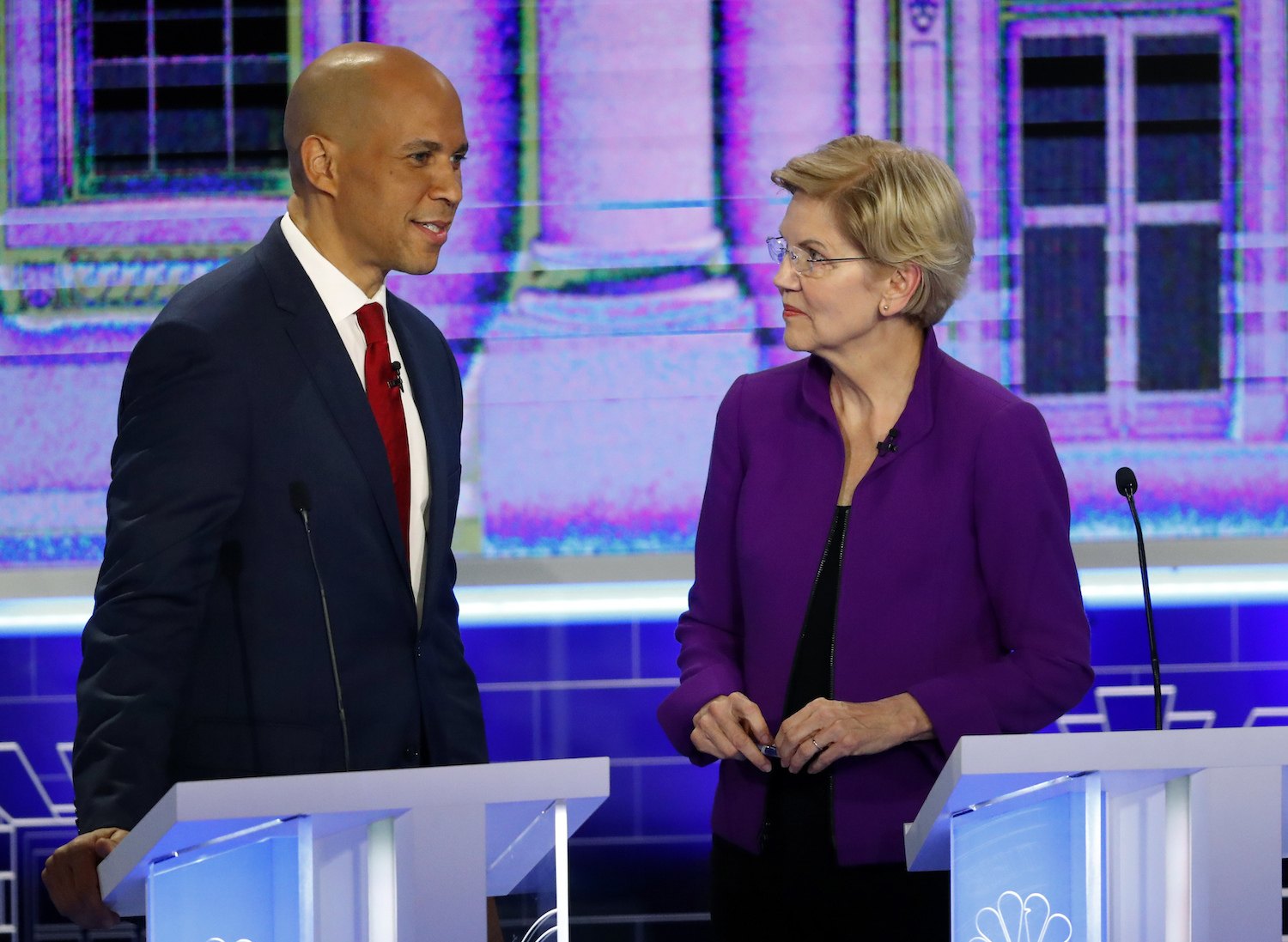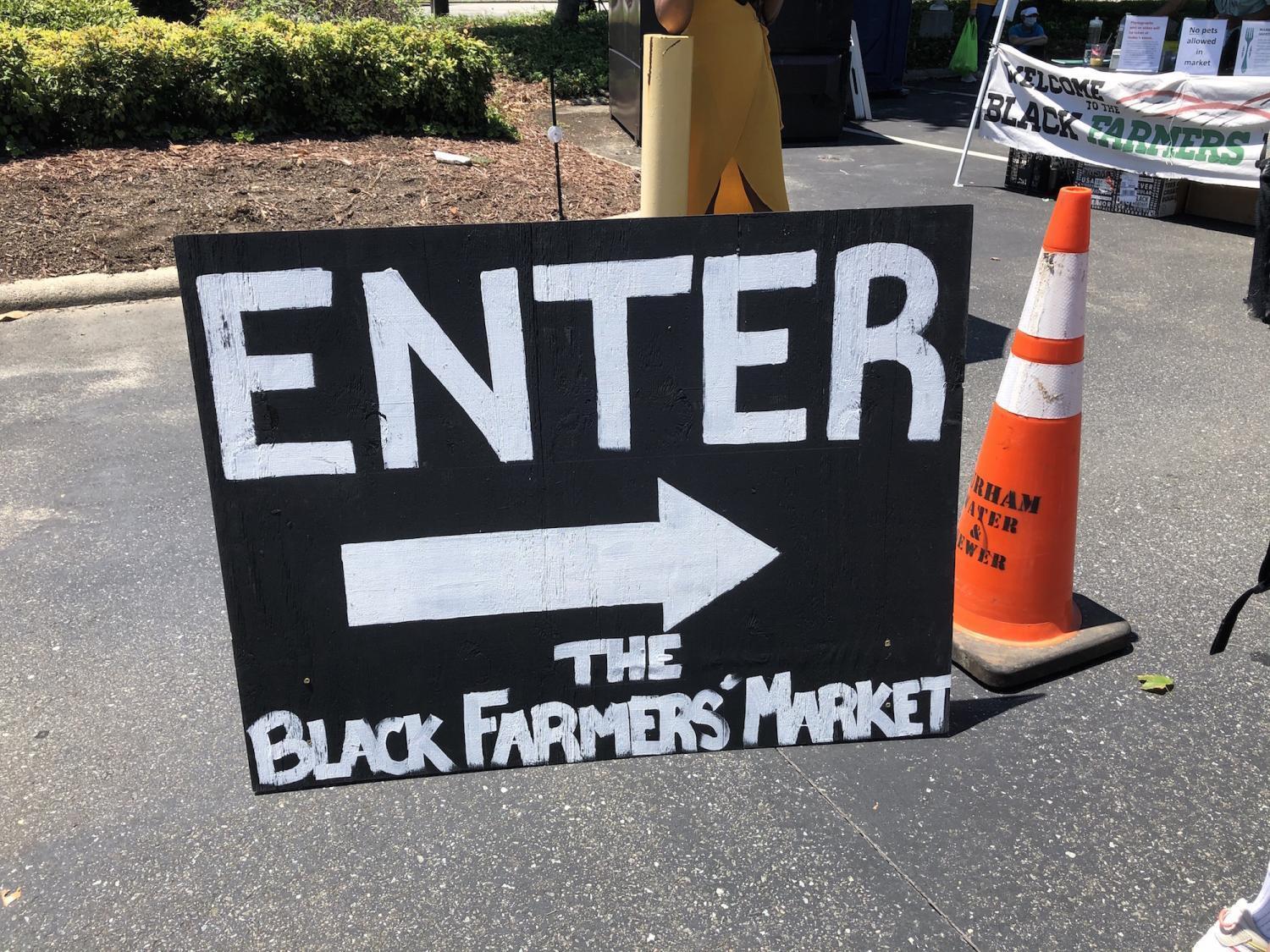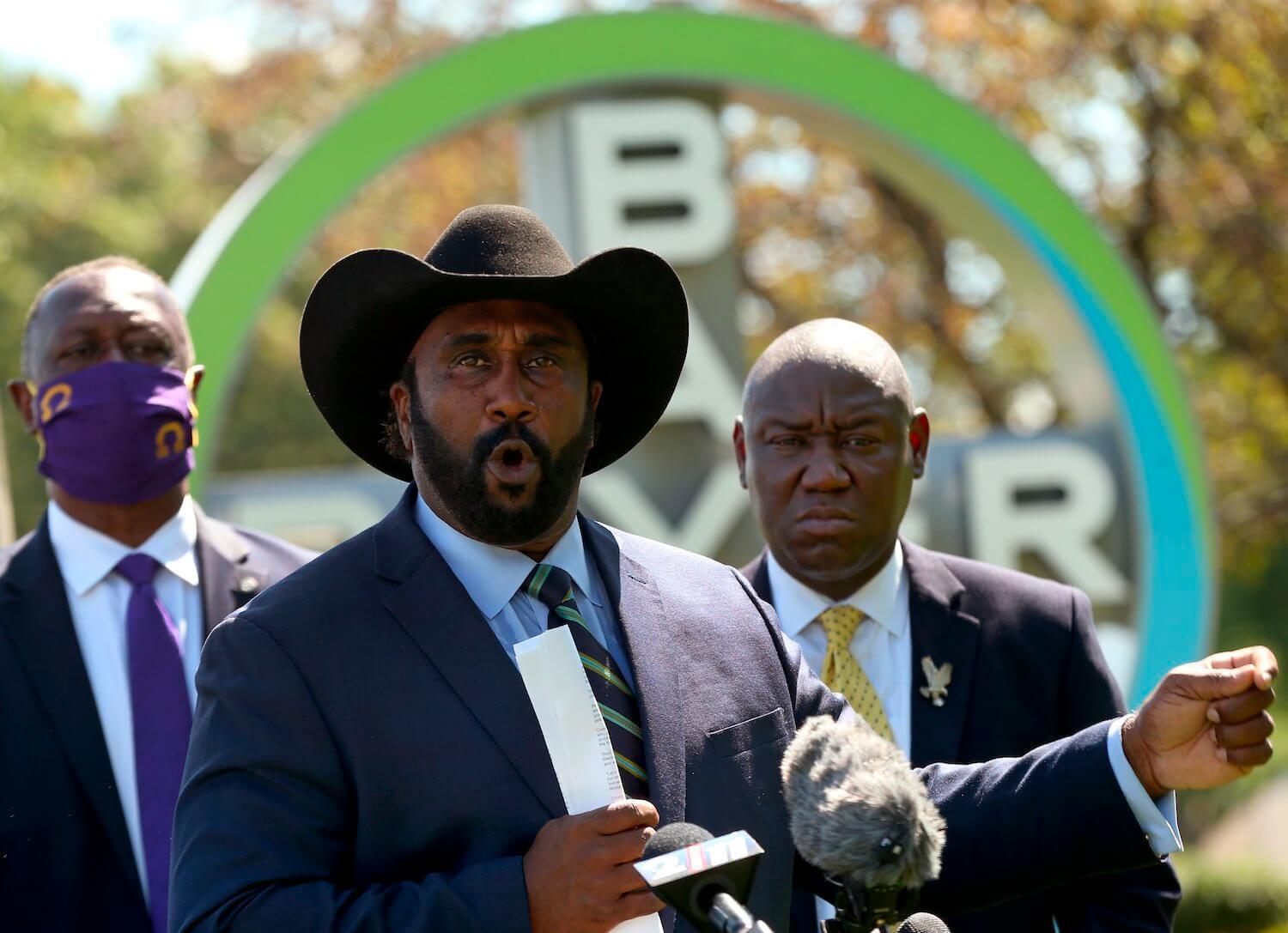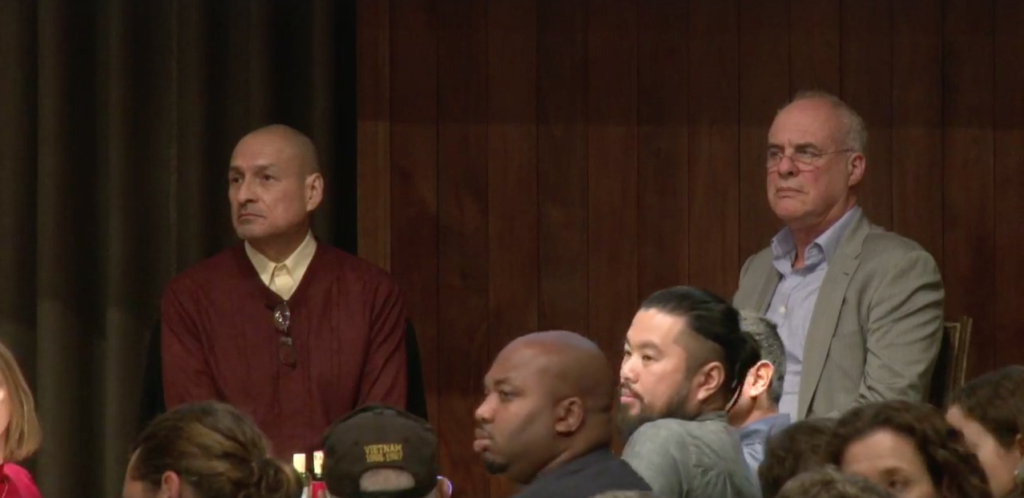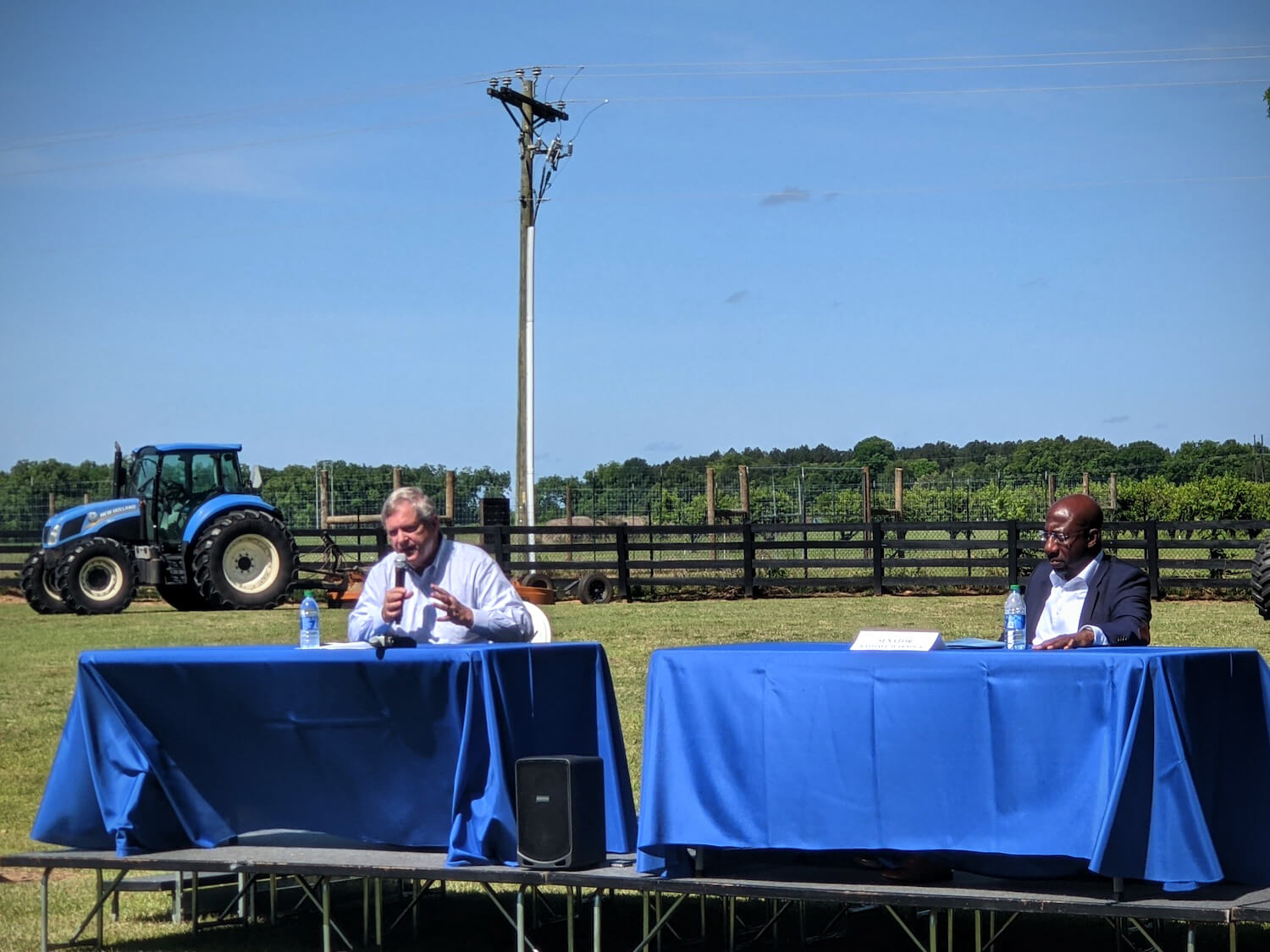
Neesha Powell-Twagirumukiza
Trust-building tour aside, many doubt promises from the agency whose policies and practices caused pain and land loss in the first place.
After asking the audience’s permission to take off his suit jacket in the 85-degree weather, Agriculture Secretary Tom Vilsack outlined the Farm Service Agency’s (FSA) plan to help Black farmers—and right historical wrongs that have left a legacy of debt—at Georgia’s Fort Valley State University (FVSU) on Saturday.
Pictured above: USDA Secretary Tom Vilsack (left) and Georgia Senator Raphael Warnock (right).
For tens of thousands of Black farmers and ranchers of color who’ve lived under the crushing burden of discriminatory loans for decades, there may be light ahead. The United States Department of Agriculture (USDA) recently announced it’ll begin issuing relief payments next month as part of a $4 billion program included in the American Rescue Plan Act (ARPA) Congress passed in March.
Seated behind a table draped in FVSU blue and situated in front of a row of tractors, Vilsack was joined by Georgia’s two U.S. senators, Rev. Raphael Warnock and Jon Ossoff, and U.S. Representative Sanford Bishop in the press conference. It was the first of many such outreach events to come nationwide, some at historically Black colleges and some in Native communities, designed to build trust and share debt-relief information with farmers of color.
Vilsack told the crowd of about 75 that “socially disadvantaged farmers and ranchers”—those who are Black/African American, Native American, Alaskan Native, Hispanic/Latino, Asian American, or Pacific Islander—will be eligible for debt relief payments if they have direct farm loans with or guaranteed by the FSA. The agency will pay an additional 20 percent on top of outstanding balances to cover related taxes and fees. USDA hopes to settle most of the payments within 120 days, a mammoth bureaucratic task. A USDA spokesperson added that farmers with a qualifying loan in foreclosure are also eligible for debt relief (a foreclosure and eviction moratorium, established in January, still stands).
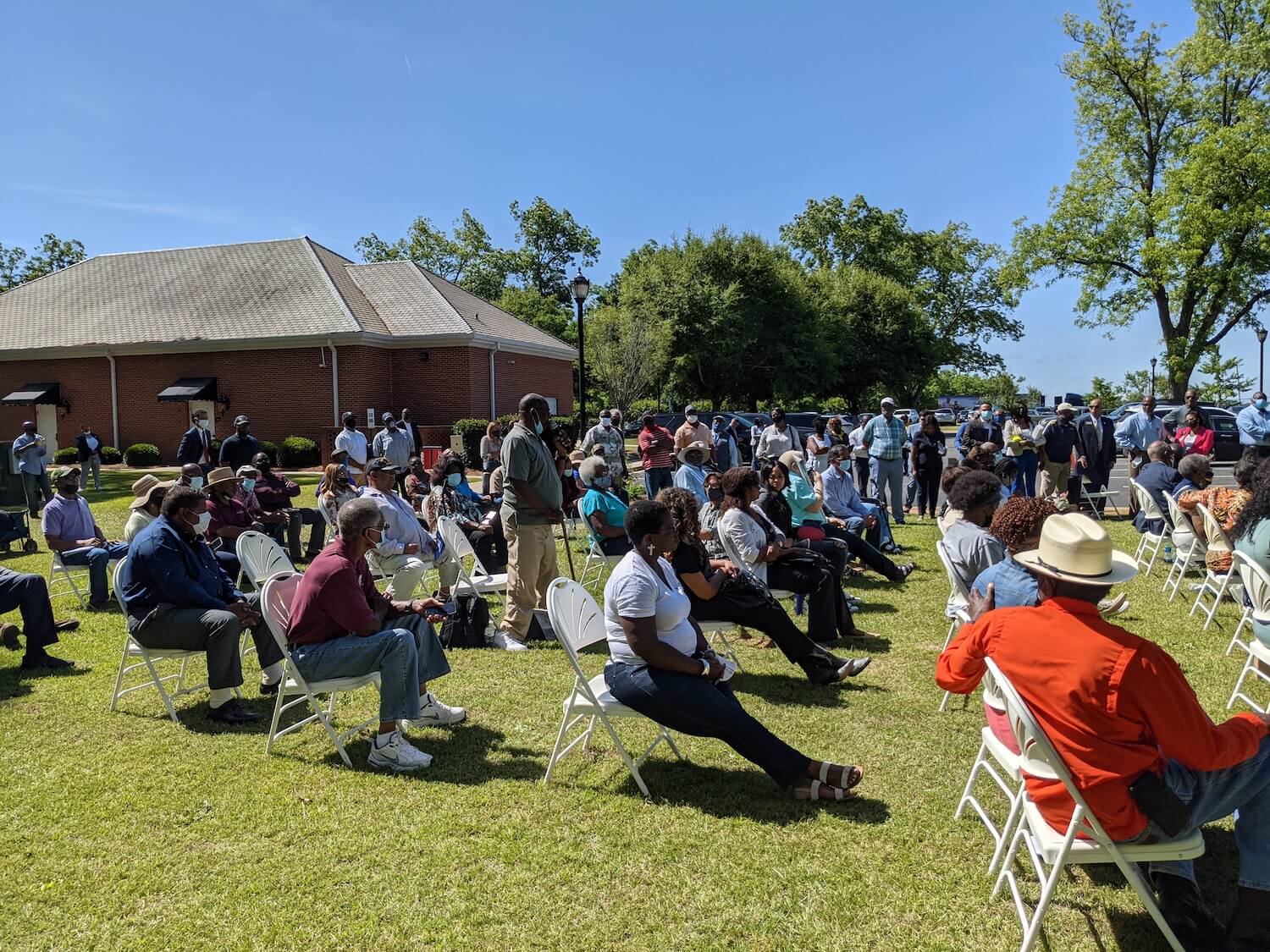
On Saturday, about 75 people gathered at Georgia’s Fort Valley State University where Agriculture Secretary Tom Vilsack outlined the Farm Service Agency’s plan to help Black farmers.
Neesha Powell-Twagirumukiza
Vilsack estimated that as many as 13,000 farmers stand to benefit from the program. In addition to the $4 billion in loan relief, Congress approved another $1 billion to provide farmers of color with technical assistance; help them compete in markets with large, commercial producers; expand their access to land; and establish an equity commission.
Vilsack used the press conference to address Black farmers’ historically fraught relationship with the USDA. “It would be great if we were dealing with issues that have just cropped up and we’re dealing with them, but the reality is, we’ve been dealing with these issues for an incredibly long period of time. The Department of Agriculture has a lot of work to do,” Vilsack said. “Today is a very, very important first step. It’s not the beginning and end with our announcement today—it’s the beginning of a beginning.”
Sitting in the audience were also a handful of farmers and officials who have criticized USDA policy and practices. Shirley Sherrod was among them. “Thank you very much for schooling me and for a lifelong commitment to justice and equity,” Vilsack said, pointing her out. Sherrod served as the first Black Georgia state director of rural development for USDA from 2009 to 2010, when Vilsack fired her over a speech taken out of context by right-wing media outlet Breitbart. When the secretary attempted to rehire her, Sherrod declined in favor of farming and organizing farmers in Albany, Georgia, where she serves as executive director of the Southwest Georgia Project for Community Education.
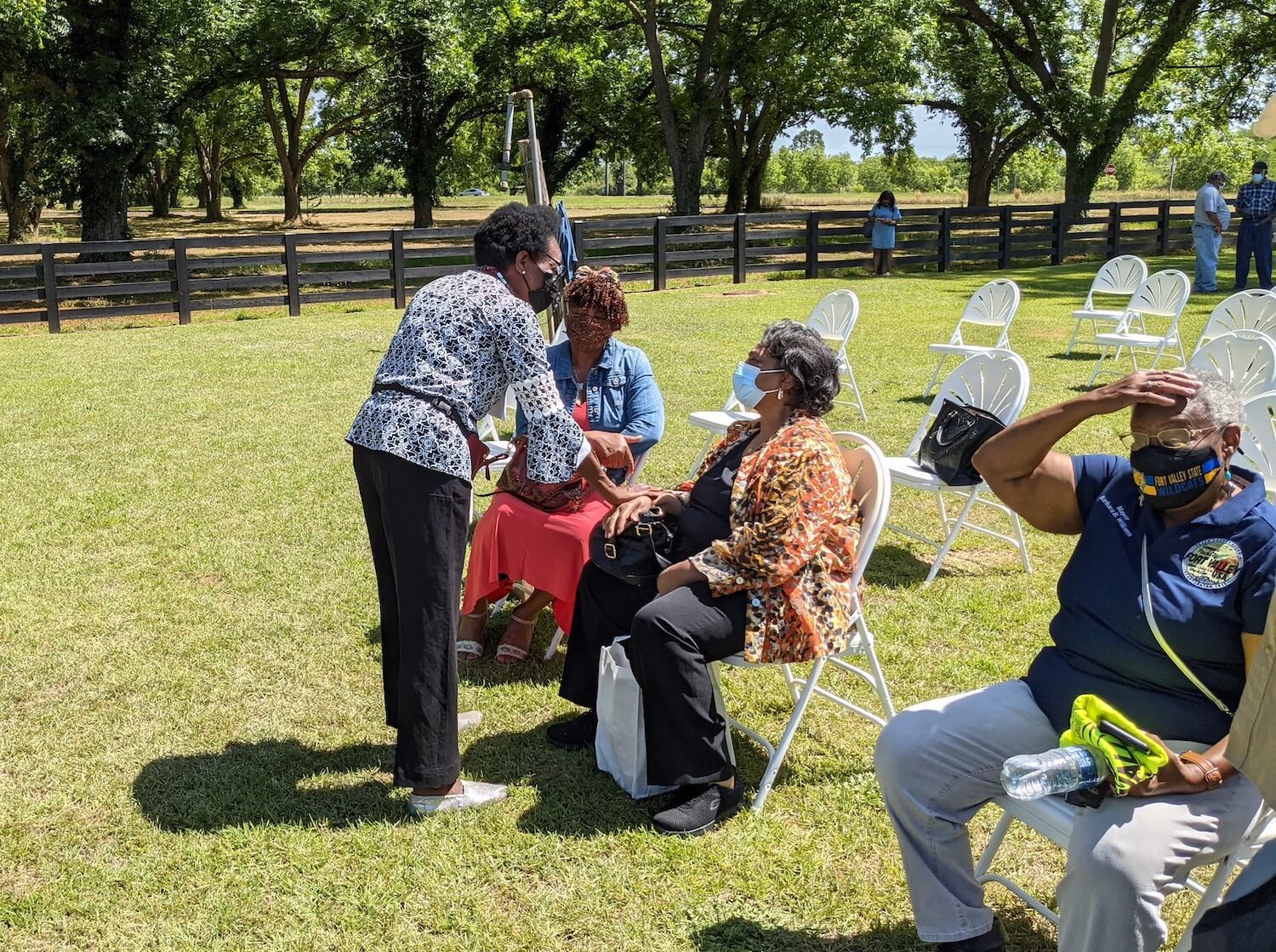
Shirley Sherrod (seated with blue mask) greets guests at the event. Sherrod served as the first Black Georgia state director of rural development for USDA from 2009 to 2010.
Neesha Powell-Twagirumukiza
Sherrod said she feels hopeful about Vilsack’s announcement, but is still worried about the details because so many Black farmers have been left behind by the USDA.
“Things just have never—as far as I’ve seen—worked out exactly like they say. When you go back to the Black farmers lawsuit, farmers who were successful were supposed to get their debt written off. It did not happen,” Sherrod said, referring to the 1999 Pigford v. Glickman settlement, the first of two class-action lawsuits filed by Black farmers against USDA for discrimination and failure to investigate or properly respond to their complaints. “So, as the details are worked out with this, I really want to stay on top of it, to be able to speak up when necessary based on the experience I’ve had through the years working with farmers.”
Leo C. Jackson of Pineview, Georgia, is one of the Black farmers who got left behind. Jackson told The Counter that his farm of 13 years was foreclosed on by a bank in 1998 and sold to a wealthy white man after he was denied a USDA loan. He’s still fighting to receive money from the Pigford settlement funds and believes there may be many other farmers with similarly unsettled claims.
“Here it is, 20-plus years later, and they still ain’t settled it. They been doing the exact same thing ever since: discriminating,” he said.
“Here it is, 20-plus years later, and they still ain’t settled it. They been doing the exact same thing ever since: discriminating.”
When asked what he would say to people like Jackson, Vilsack responded, “I don’t know the circumstances of individuals, but I will tell you that we hired an entity to do extensive outreach, and I think there was somewhere in the neighborhood of 18,000 to 19,000 checks that were sent out. I suppose nothing’s ever perfect, and I don’t know why that particular individual didn’t get the relief. If they applied, if they filed the papers, they should have, and if they filed the papers, I suspect that there’s probably some mechanism for them to come back to us and say, ‘Hey, I’ve been waiting, I filed, I did everything you asked me to do, and I didn’t get a check.’”
Concerns similar to Jackson’s were echoed throughout the event. One Black farmer who did not give his name asked Vilsack a question on behalf of two ailing, elderly Black farmers he’d brought with him and who are struggling to pay private loans after being denied USDA loans. “It’s supposed to be a rescue plan. They need rescue,” the man said. Farmers with private loans not guaranteed by USDA aren’t eligible for the new debt relief program.
Eddie Latimore and his brother, Walter, of Byron, Georgia, had to downsize their farm in the 1980s after their father died, and they couldn’t get a USDA loan for the equipment they needed to run the operation. They finally got one in 2012, but only after being denied and filing an appeal.
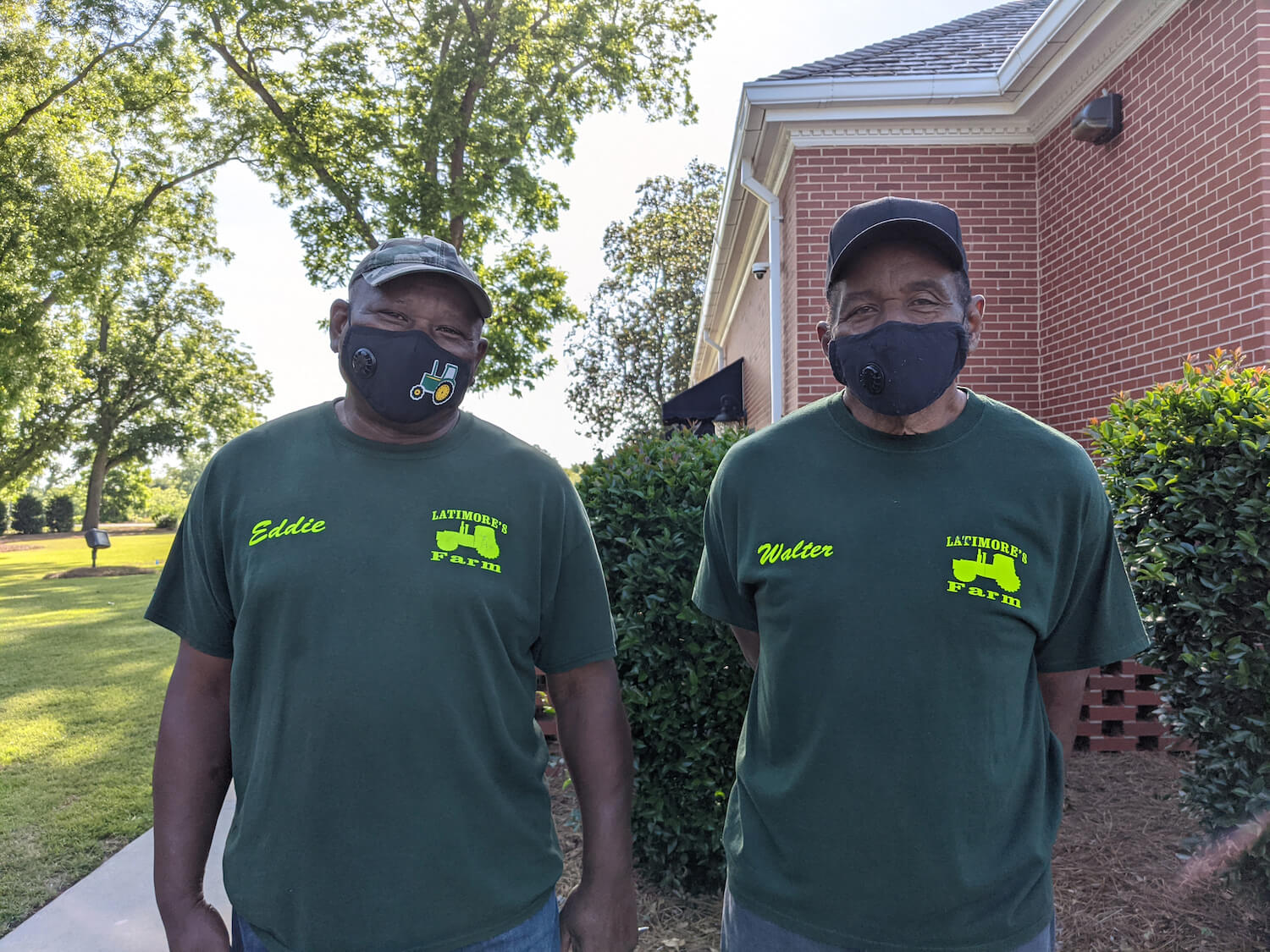
Brothers Eddie and Walter Latimore downsized their Byron, Georgia farm in the 1980s after they couldn’t secure a much-needed USDA loan.
Neesha Powell-Twagirumukiza
“I don’t know what they have against the Black farmers, but there’s a lack of credibility to us. They give you the runaround on different issues,” Eddie Latimore said. He cited lack of communication as another one of the agency’s major problems. “We’ll go to our local FSA, and they have limited words to tell us and limited stuff to inform us of, so we just like to be in the know. … We just trying to hang in there.”
The Latimores’ cousin, Nathaniel Rayford of Fort Valley, said that he wouldn’t have known about the day’s event if it weren’t for his neighbor, a city councilmember.
“We don’t have any type of communication, we’re not getting any kind of help, and then we’re wondering why we’re faltering. We’re faltering because we have lack of knowledge, lack of assets, lack of resources, and everybody doing everything to us,” Rayford said. Rayford, who’s also fighting a solar farm being built by Georgia Power and FVSU right next to his family’s farm, continued, “I should have gave up, but I didn’t.”
And there are other fights. Some white farmers, who benefited most from the Trump administration’s Covid-19 bailout money last year, have called this initiative a “race-based loan forgiveness program.” Farmers claiming reverse discrimination have already filed multiple lawsuits.
The relief program hasn’t pleased banks either. As The New York Times reported last week, three major banking groups argue that by allowing borrowers to repay loans early, USDA is depriving banks of interest income. As a result, they may be less likely to extend credit, depriving farmers of color of future opportunities.
Other critics of the relief program, including South Carolina Sen. Lindsey Graham, say it shouldn’t have been part of the ARPA in the first place because it’s akin to “reparations” for African Americans, not Covid-19 assistance.
“We don’t have any type of communication, we’re not getting any kind of help, and then we’re wondering why we’re faltering. We’re faltering because we have lack of knowledge, lack of assets, lack of resources, and everybody doing everything to us.”
“To a white farmer who thinks that, ‘Gosh, somebody’s getting something I’m not getting’: Now, maybe you might feel sympathy for folks for the last 100 years who’ve had to feel that way,” Vilsack said.
In response to the banks, he said, “The banks charge a prepayment penalty, and we’re paying the penalty. Why do you charge a prepayment penalty? Because if you get prepaid, you would lose income. The prepayment basically takes care of that situation, plus you can lend the money out again, plus interest rates might be higher this time, so you actually might make more money. So not much concern about the banks. They’re going to be fine.”
Dr. Veronica L. Womack, executive director of the Rural Studies Institute at Georgia College and State University and founder of the Black Farmers’ Network, said building an accountability mechanism into the new USDA programs for farmers of color will be key for successful implementation. “You have the writing of policy, the ideas of policy, you’ve got the implementation phase. But you also have to have some accountability measures put in place to ensure that these things are being done, especially when you’re dealing with vulnerable populations that have been negatively impacted before.”
Horace Amica was another hopeful yet critical Black farmer at the press conference. He farms the same land in Macon County, Georgia, that his grandfather did, and said he can’t grow row crops like he used to 40 years ago due to changes in rainfall. Amica wishes more Black farmers had known about the day’s event but still plans to spread the word about the new programs.
He said, “It’s a good start, but it should have been started 30 years ago.”
Correction: Due to an editing error, this piece originally misstated the $1 billion amount of additional funding available for technical assistance and other support for farmers. We regret the error.

